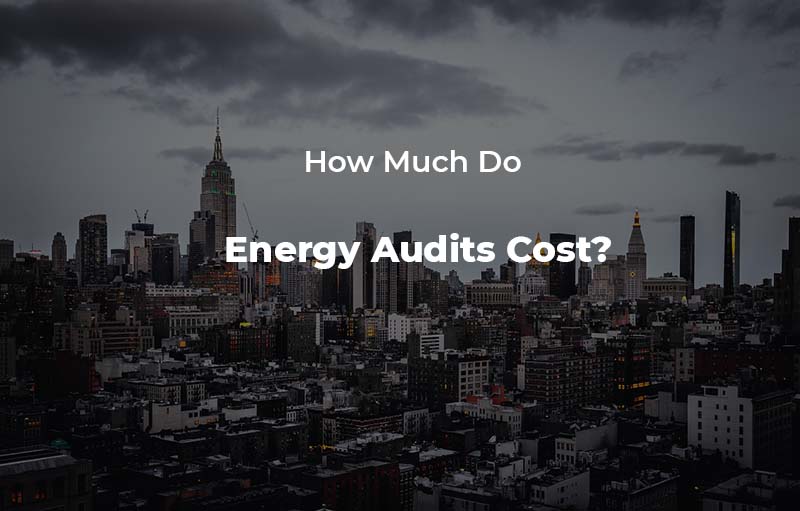
11 Feb How Much do Energy Audits Cost?
How Much do Energy Audits Cost
An energy audit is the identification, survey and analysis of the energy usage of a building which is carried out to optimize its efficiency. In other words, it helps maintain the same level of output while minimizing consumption. It also guarantees reduction in terms of cost to the building owner and carbon footprint to the planet, respectively.
The energy efficiency grades you’ve probably seen posted in entryways and lobbies, are “score cards” which all buildings over 25,000 square feet get after carrying out the process of benchmarking (analysis of building’s energy usage and utility bills) which falls under the same law. Local Law 97 requires buildings to meet new energy efficiency goals, so it’s necessary to address this in order to actually reduce emissions.
It is essentially a ‘health check-up’ for your building. Energy audits are performed to maximize cost effectiveness prioritizing health, safety & comfort. Experts (energy service companies- ESCOs, energy consultants, and engineering firms) complete a comprehensive diagnosis using cutting-edge technology to thoroughly evaluate & rectify the situation at hand. These are mandated to be performed by highly trained contractors as they own the necessary knowledge and skill set to precisely estimate potential savings.
New York City Local Law 87 mandates for buildings over 50,000 square feet to perform energy audits & retro-commissions periodically as part of the Greener, Greater Buildings Plan. The law intends for building owners to remain informed about their energy consumption patterns so as to ideally maximize energy efficiency and slash carbon emissions.
What to expect?
The basic requirements of the law are :-
1. Determining how and when a building needs to comply
2. Conducting an energy audit & retro-commissioning of all the systems mandatorily which will enable the owners to submit the Energy Efficiency Report. The report is to be compulsorily submitted to the City once every ten years.
These 6 steps comprise conduction of an energy audit
1. Identify the area that needs to be audited
2. Identify the list of energy using equipment
3. Determine the operating hours for equipment being used
4. If possible, record power measurements from installed meters, read lux levels, etc.
5. Calculate the energy consumption of the existing process/equipment
6. Identify opportunities for energy waste (from checklist, etc.)
The main outcome of an energy audit is a list of EEMs or Energy Efficiency Measures, their associated energy savings potential, and an assessment of whether EEM installation costs are a good financial investment.
The process can also be looked at in levels, where the initial level checks the heating, insulation, furnace filters, ductwork, equipment testing, lighting and a comprehensive combustion analysis. Sometimes energy audits are done as part of broader capital needs assessment where interiors are also checked.
| Preliminary Analysis | Level 1 | Level 2 | Level 3 |
|
|
|
|
The cost of an energy audit & efficiency goals
The New York State Energy Research and Development Authority (NYSERDA) upon partnering with local contractors can render free energy audits for one-to-four-family buildings. Audits cost anywhere between a few thousand dollars to $20,000 to $30,000, depending on the building’s size.
The owner will be handed a list of recommendations post the audit, which will include retro-commissioning measures (like fixing light, tweaking energy usage), and also larger investments – low flow fixtures, replacing boilers. This is done to give an insight into savings and cost.
To know more about Energy Audits, get in touch with our experts!
